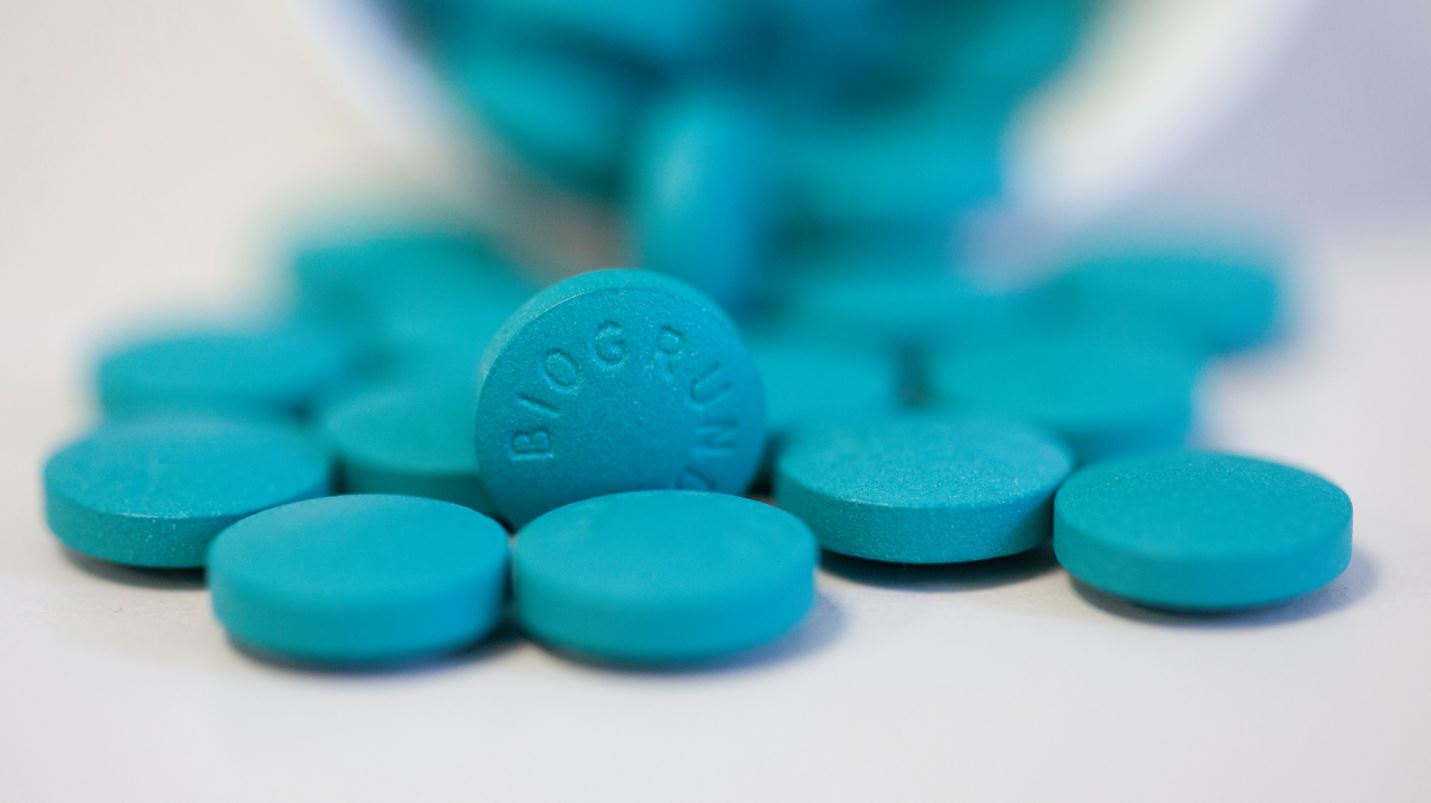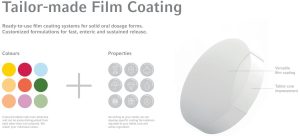Controlling the drug release with functional film coating

Functional film coatings are a topic which considers many formulators. Therefore we gladly share this interesting overview by BIOGRUND.
Definition of “Functional Film Coating”:
A functional film coating has an influence on the drug release and is used to modify the release of the active pharmaceutical ingredient (API) and achieve the desired tablet performance. As well as for other solid dosage forms like capsules, granules or pellets.
Therefore non-functional film coating is not related to the API. It is more for aesthetic, mechanical stability, marketing reasons (color) or easier intake (swallowability).
Why use functional film coating?
The tablet core is coated with a functional coating, e.g. to achieve an odor or taste masking of APIs that are bitter or bad of smell. Furthermore, it is possible to protect the API against environmental influences such as oxidation, UV radiation and moisture. Other functions include the targeted or delayed release of the active ingredient, protection against stomach acid or protection of mucous membrane and reduction of side effects.
Reasons for functional coating
1. Moisture Protection & Stabilization of the drug
Especially drugs susceptible to hydrolysis, require good moisture protection. This is mainly achieved by packaging and the use of desiccants. However, special moisture protection film coating systems such as AquaPolish® MS, AquaPolish® PRO, etc. can be very useful to protect the solid oral dosage form. The film coating provides moisture protection and can help increase stability of the tablet core. It also protects the dosage form during further processing (packaging/transport) by stabilizing a moisture-sensitive active ingredient and at the same time reducing possible incompatibilities with a second active ingredient in a fixed-dose combined pill (FDC). A coating with special moisture protection thus ensures that the active ingredient remains permanently isolated in the tablet core, especially in environments with high humidity
2. Taste & Odor masking
Masking bitter tasting and bad smelling API’s is necessary to make the intake of tablets as pleasant as possible for the patient and thus to increase patient compliance. The aim is to mask the taste for the time it takes to swallow the medication. An important intention is therefore to delay dissolution in the oral cavity without affecting rapid dissolution in the stomach. The bioavailability should not be affected.
Patients with dysphagia hold the tablet/granule/pellet significantly longer in their mouth. (“Pill swallowing by Adults with dysphagia” by Giselle Carnaby-Mann, 2005)
In addition, Dr. Mahmud Yunis (Technical Director, BIOGRUND) said that elderly people or people with problems when swallowing oral dosage forms sometimes have them in their mouth for up to 10 minutes before they have swallowed everything.
Coating systems formulated with synthetic polymers like e.g. AquaPolish® TC, AquaPolish® OM, Eudragit® E PO Ready-Mix are suitable to mask bad odor and taste of solid oral dosage forms.
Continue reading the Excipients Week article here
Source: 𝗖𝗼𝗻𝘁𝗿𝗼𝗹𝗹𝗶𝗻𝗴 𝘁𝗵𝗲 𝗱𝗿𝘂𝗴 𝗿𝗲𝗹𝗲𝗮𝘀𝗲 𝘄𝗶𝘁𝗵 𝗳𝘂𝗻𝗰𝘁𝗶𝗼𝗻𝗮𝗹 𝗳𝗶𝗹𝗺 𝗰𝗼𝗮𝘁𝗶𝗻𝗴 Functional film coatings are a topic which considers many formulators. Therefore I gladly share this interesting overview by BIOGRUND


